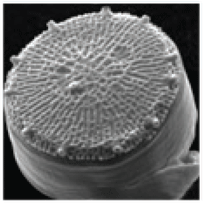Article contents
Proteins and peptides for functional nanomaterials: Current efforts and new opportunities
Published online by Cambridge University Press: 10 December 2020
Abstract

The ability to synthesize and assemble functional nanomaterials using proteins and peptides is an area of active research, merging various methodologies common in biochemistry and molecular biology to create a wide range of nanoscale materials with intriguing properties. These “bioenabled” nanomaterials have distinct advantages over their nonbiological counterparts, including diverse/precise chemical functionalization, benign aqueous-based processing conditions, and the inherent high specificity for targeted substrates. In parallel, the advent of synthetic biology is providing avenues to engineer novel protein chemistry and functionality, leading to commercialization in the startup sector. In this article, we provide a prospective review for fusing established methods in protein-enabled nanomaterials with those found commonly in synthetic biology. We first summarize significant findings and outcomes from the peptide and protein-enabled nanomaterials literature. The application of synthetic biology methodologies toward research areas of tangential similarity will also be summarized, including the directed evolution of enzymes for bioinorganic reactions, noncanonical amino acid engineering in proteins, and the incorporation of electrical active elements into anisotropic proteins. To conclude, we will suggest avenues for new research directions for protein-enabled nanomaterials that fully exploit the power of synthetic biology.
- Type
- Engineered Proteins as Multifunctional Materials
- Information
- MRS Bulletin , Volume 45 , Issue 12: Engineered Proteins as Multifunctional Materials , December 2020 , pp. 1005 - 1016
- Copyright
- Copyright © The Author(s), 2020, published on behalf of Materials Research Society by Cambridge University Press
References
- 5
- Cited by



